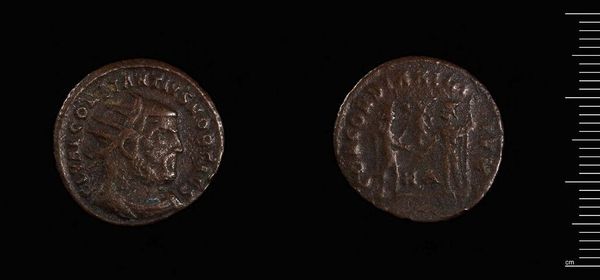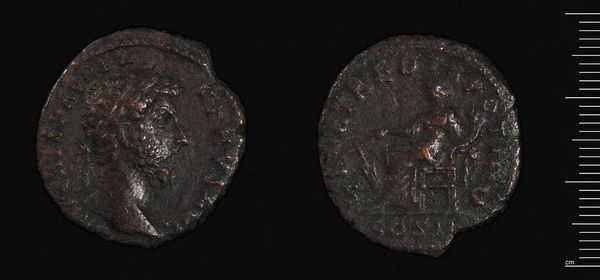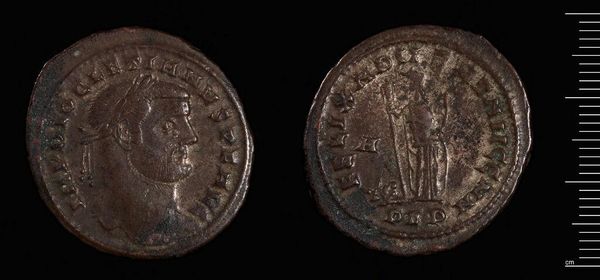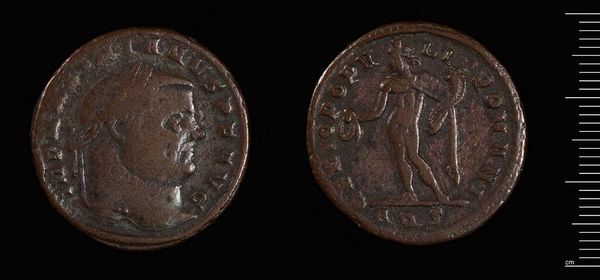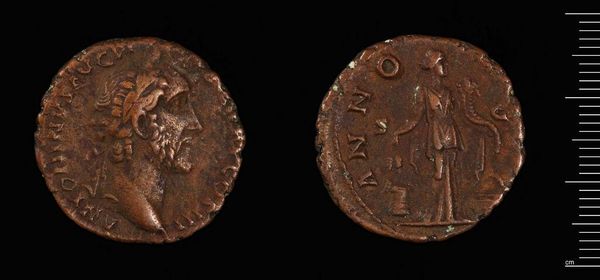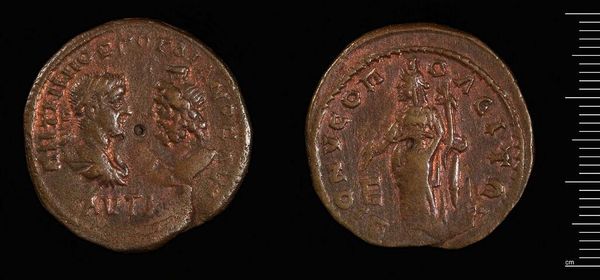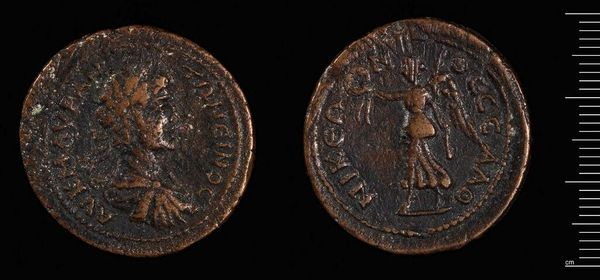
Dimensions: 22.68 g
Copyright: CC0 1.0
Curator: This is a sestertius of Maximinus Thrax, currently residing at the Harvard Art Museums, weighing in at just over 22 grams. Editor: It has such a weighty, tactile feel, doesn't it? Like holding a piece of history itself. What can you tell me about Maximinus I Thrax and this coin's role in his image-making? Curator: Maximinus was an interesting character, rising from humble origins to become emperor. Minting coins like this was crucial for projecting power and legitimacy. The material, likely bronze, speaks to its value in circulation. Editor: Yes, and let's consider the imagery – the imposing portrait, the depictions of authority. It's all about reinforcing his rule, particularly given his outsider status. How would the average person experience this image of imperial power? Curator: Absolutely. The coin becomes a tool, shaping perceptions of leadership and Roman identity. It also reflects the technical skills involved in die-making and minting at the time. Editor: Food for thought about labor, materiality, and politics, all condensed into a small, but powerful object. Curator: Precisely. It's a reminder that objects can carry multifaceted narratives.
Comments
No comments
Be the first to comment and join the conversation on the ultimate creative platform.
